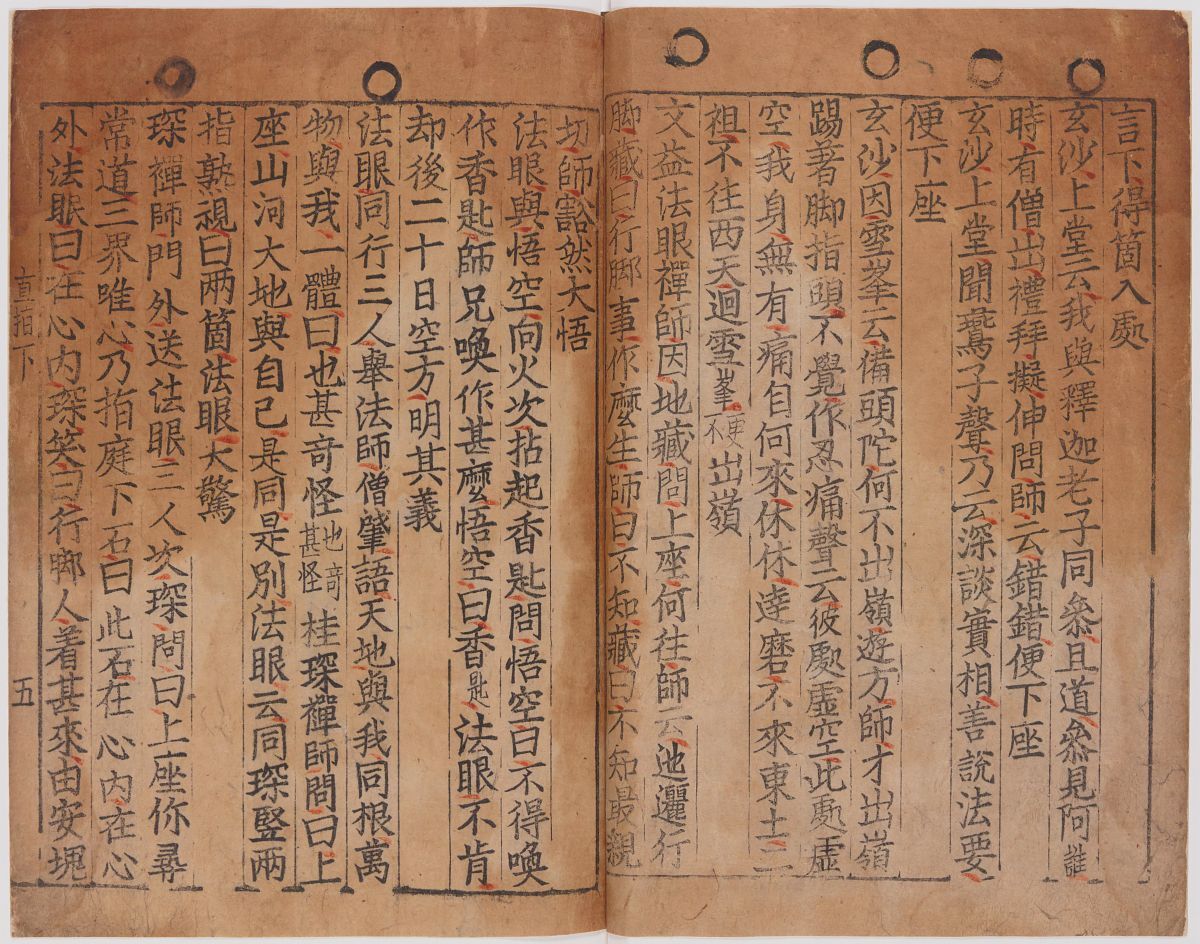Jikji
The next book is Jikji, which was printed using movable metal type in Korea. While the Gutenberg Bible was the first main book to be printed in Europe using movable metal type, Jikji is an older example of this process.
Technology
Jikji is the world’s oldest book printed using movable metal type. It was printed in Korea in 1377 during the Goryeo dynasty of Korea. Jikji contains the essentials of Zen Buddhism, compiled by the Zen Master Baegun. It consisted of 2 volumes and 307 chapters. The oldest surviving copy, the second volume of the Jikji book, is kept in the National Library of France (Yoo 2).
Printing that used movable metal type was developed in Korea at least two centuries before it was in the West (Sohn 96). Methods of type-casting and mold-making were developed in Korea and used for coin-casting. The casting process used a drum-shaped mold and produced detailed characters on the metal coins. The clear and uniform characters that were printed on the coins allowed for and contributed to the transition to making the casting for type (Sohn 100).
The processes of casting and printing created jobs such as a letter-cutter, caster, storing boy, collator, and type-setter. Young boys of the artisan class typically worked these jobs. In the printing process, the type was placed on the manuscript, lined up with the written forms, before being set into the press. In Korea, it was practical to use the movable type to print a small number of copies of various books (Sohn 100).
The advancement from wood block printing to using movable metal type was made to produce more accurate and efficient printing, but not to expand to mass production or the general public. (Choi and Kim 25). The limitations of wood supplies for Korean xylography also contributed to the invention of casting with molds and the use of movable metal type (Park 13).
Distribution
Printing with movable metal type in Korea mainly developed in the Yi dynasty, and was kept within royalty. This printing only served the noble groups at the top of Korean society. The types of books that were being printed were also restricted, and the Yi dynasty prioritized Chinese classics. The printing of Korean literature was not yet profited off of or modernized (Sohn 103).
During the Goryeo Dynasty in Korea, the demand for movable metal type came from the demand for Buddhist books. Buddhism had declined in its status, and the publication of Jikji was involved in the Buddhist community’s aim to return the religion to its popular status. Jikji is an educational Buddhist book that consists of teachings of Zen Buddhism that were useful for monks (Choi and Kim 20).
Preceptor Baegun learned Buddhist teachings from Zen Master Seogok in China, and wrote an abstract of the content of his teacher’s book when he returned to Korea. Baegun’s students published Jikji, the writing of their teacher, with metal movable type. Baegun had influence on the Buddhist community at the end of the Goryeo Dynasty (Choi and Kim 21).
Jikji is significant today because it is the oldest example of a book printed with movable metal type.
